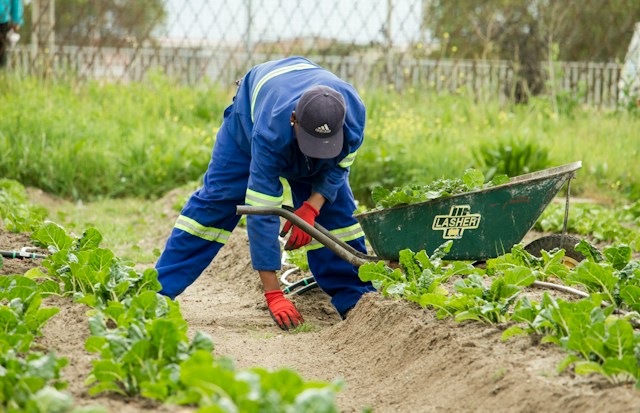In the intricate world of contemporary farming, labor management forms a crucial aspect that dictates success.
Every producer is well aware of the fact that proficient labor management helps optimize operations while reducing costs.
However, adopting effective strategies isn’t always straightforward.
This article seeks to delve deep into innovative, applicable steps designed to enhance productivity within the produce growing sector.
Detailed here are vital tenets that may influence the positive evolution of labor administration in today’s farming industry.
Reading on, you’ll find an exploration into methodologies created to align the employees’ talents with the grower’s objectives, ensuring mutual growth and prosperity.
Labor Management Tips For Modern Produce Growers
1. Implement Comprehensive Training Programs
For any modern produce grower, the first crucial step in successful labor management is to implement comprehensive training programs for their workers.
The staff forms the backbone of any organization, and their skills and enthusiasm can directly impact productivity and returns. Training these valuable assets is critical for the success of the business.
Not only do these programs equip the team with the necessary job skills, but they also ensure that each employee understands their role within the organization.
Comprehensive training programs might comprise of aspects such as skill development, safety protocols, product knowledge, and even customer service techniques.
These programs can help to minimize gaps in knowledge and skills across the team, leading to a more cohesive and efficient workforce.
Furthermore, continuous workforce development can boost staff morale and job satisfaction, reducing employee turnover rates.
In order for training to be successful, it’s essential that the company invests in quality training materials and competent trainers.
Employees should be given ample time to grasp new concepts and their progress should be monitored closely throughout the duration of the program.
Every comprehensive training program should be tailored to suit the unique needs of the organization, including specific goals, key performance indicators, and the nature of the produce being grown.
It’s also important to integrate technology into these training programs whenever possible, to keep up with the evolving agricultural market and to familiarize the workforce with any new equipment or processes.
For instance, Virtual and Augmented Reality (VR/AR) technology can be used to create simulated real-life scenarios for practical training sessions.
Although the initial cost of implementing technology in training might seem hefty, the long-term benefits in terms of efficiency and productivity could make the investment worthwhile.
Regular feedback sessions can also be incorporated into these training programs, to allow workers to voice their opinions and concerns, and to ensure their ongoing learning and development within the organization.
Ultimately, the aim of these comprehensive training programs is to create a culture of continuous learning within the organization.
This not only equips the workforce with updated skills but also creates a more satisfied and dedicated team thus increasing productivity and profitability for the modern produce grower.
In sum, investing in comprehensive training programs will ensure that staff are well-prepared to handle the challenges of modern agricultural processes, fostering a positive work environment and ensuring the overall success of the business.
2. Maintain Fair Salary Structures
A crucial component for effective labor management in modern produce farming is the ability to maintain fair salary structures.
To make this possible, produce growers must first understand the standard wages within their industry and location.
This involves conducting research to see what other farms and businesses in the area pay their workers for similar roles.
Having this knowledge will help to define a competitive yet sustainable wage baseline.
Beyond the baseline, growers should also consider the specific roles, experience levels, and skill sets of their employees, as these factors can affect how much a worker is paid.
For instance, a worker who has been with the farm for many years and has gained valuable skills and experience over time, should be compensated more than someone starting out.
This ensures that the value of longevity, knowledge, and experience is acknowledged and appreciated, promoting further commitment and job satisfaction among employees.
Furthermore, pay rates should be regularly reviewed and adjusted when necessary, to keep up with inflation and cost-of-living increases.
A farm may also introduce performance-based bonuses or profit-sharing schemes as a means of rewarding hard work and fostering a sense of shared success.
This not only incentivizes good work, but also gives employees a tangible way to participate in the farm’s financial success.
An additional consideration is whether to offer fringe benefits alongside wages.
These are non-cash benefits like health insurance, retirement plans, paid time off, or even housing and meals, which can add significant value to a worker’s total compensation package.
This is particularly important in the modern farming sector, where competition for skilled labor can be fierce and employees often have choices about where to work.
In summary, maintaining a fair salary structure requires ongoing effort and consideration, from understanding industry standards, through to considering the specific roles and skills of employees.
By implementing these practices, produce growers not only ensure they are providing fair compensation, but also enhancing their attractiveness as an employer to prospective employees, aiding in labor retention and productivity.
To remain competitive and efficient, modern produce growers must continually assess and adapt their salary structures to reflect the realities of the market and the needs of their workforce.
3. Establish Clear Communication Channels
Effective labor management in modern produce growing operations is inconceivable without the establishment of clear communication channels.
Whether it’s disseminating critical information to employees or facilitating dialogue within the team, communication is the backbone of successful labor management.
Moreover, an open and transparent communication channel encourages trust and respect among the workforce and the management.
Transparent communication platforms have the power to ignite a sense of belonging and job satisfaction among employees.
It is also important to understand that clarity in communication transcends sentences; it involves making sure that your workforce understands the vision and purpose of the farm and how their roles contribute to that.
Embedding this understanding in the workforce can significantly improve productivity within the farm.
Modern produce growers should prioritize including multiple communication styles in their communication strategy.
With the diverse workforce in modern farms, it is likely not every employee will understand information the same way; hence the need for diversity in communication.
Effective communication channels could range from weekly meetings, conference calls, email briefings, to digital platforms like intranet or communication apps designed for real-time information relay.
Critical information that may need relaying includes work schedules, safety instructions, updated farming techniques, and feedback about work performance among others.
It’s also worth noting that effective communication in the work place is not solely dependent on the management.
Employees should also be encouraged to freely express their opinions and concerns, creating a sense of mutual understanding between the management and the workforce.
The feedback derived from such open dialogue can be vital in making critical decisions and adjustments.
Regular training sessions and workshops can also play a major role in enriching communication patterns in the workforce.
Ultimately, the establishment of fruitful communication channels is a major determinant of the overall performance and sustainability of modern produce growers.
4. Foster team culture and inclusivity
One of the best labor management practices for modern produce growers is to foster a team culture that encourages inclusivity in all aspects.
To promote high morale and productivity, it is essential to develop an environment where each member feels accepted and valued.
This process starts with cultivating a shared sense of purpose where everyone recognizes their role and contribution to the organization’s shared goals.
Each individual within your team brings a unique set of skills, knowledge, and perspectives that are instrumental to the team’s success.
Open dialogue and valuing diverse viewpoints can spur innovation, foster a deep sense of belonging, and boost overall productivity significantly.
Creating an inclusive culture also means taking steps to actively reduce bias and promote fairness within the team.
You can accomplish this by promoting a zero-tolerance policy against discrimination and ensuring that everyone understands the consequences of their actions.
As a leader, it is your responsibility to set the tone and model inclusive behaviors, fostering a culture where individual differences are respected and celebrated.
Promoting collaboration is key to building a strong team culture, and it requires a shift from competitive to cooperative mindsets.
This can be done by introducing team building activities, sharing success stories, and promoting collective problem-solving strategies.
Workplace parties, social activities and recognition programs are also great ways to foster a positive team spirit.
To build a more inclusive culture, ensure decision-making processes are transparent, fair and inclusive, giving everyone an opportunity to contribute and share their thoughts.
Remember, an effective team culture is not just about having a good relationship with one another but also about ensuring everyone feels empowered to do their best work.
Produce growers who invest in team culture and inclusivity not only improve their team’s morale, but also their bottom line.
In the end, fostering team culture and inclusivity is a continuous effort, requiring ongoing commitment and intentionality, but it is an investment worth making for the overall health and success of your organization.
5. Invest in labor-saving technologies
One significant labor management tip modern produce growers should consider is to invest in labor-saving technologies.
Contemporary farming activities require more than just manual labor. It requires strategic planning and efficient implementation of the most advanced technologies.
In today’s agricultural industry, there are numerous labor-saving technologies that can hugely influence productivity and financial returns.
Investing in these technologies is not just a matter of reducing labor costs but also a strategy for improving efficiency, minimizing human errors, and building the capacity for scalability.
The use of machinery and automation in farming activities, for example, can significantly reduce the number of hours spent in tasks such as planting, harvesting, and processing the produce.
Labor-saving technologies like drones can be used for aerial surveillance and monitoring of the farmland, reducing the need for manual inspections.
Furthermore, technologies such as farm management software and mobile applications can aid in creating work schedules, monitor performance, and record key farm data timely and accurately.
The digital tracking and monitoring tools reduce the need for manual record keeping and data analysis, thus freeing up valuable time that can be utilized for core agricultural activities.
Every piece of equipment, from tractors to processing machines, can now be connected to the internet for remote control and monitoring, making farming less labor-intensive and more efficient.
High-tech sensor technologies and precision farming tools like automated irrigation systems have also been developed to reduce the manual labor required for efficient farm management.
While some farmers may still hesitate to invest in modern technology because of the initial cost, it’s crucial to recognize the long-term benefits.
An investment in technology is an investment in the future of the farm, ensuring its sustainability and profitability in the long run.
The reduction in labor costs, increase in efficiency, and potential for scale make the investment in technology a powerful tool for modern produce growers.
With the right technologies in place, not only can farming become less labor-intensive, but also more productive, profitable, and sustainable.
6. Implement Flexible Work Schedules
In the modern era, flexible work schedules have emerged as a highly effective labor management strategy.
For modern produce growers, adapting this approach can significantly boost productivity and employee satisfaction.
A flexible work schedule involves allowing employees to customize their workdays based on their personal needs and responsibilities.
This can take many forms, such as flextime, compressed work weeks, job sharing, or telecommuting.
Bearing in mind the nature of agricultural work, implementing flexible schedules may require creative strategies and thoughtful planning, but the rewards can be immense.
One of the primary benefits of flexible work schedules is that it can help reduce burnout and increase job satisfaction.
When employees are allowed to work in a manner that suits their lifestyle and personal responsibilities, they are more likely to feel motivated, focused, and invested in their work.
The improved work-life balance can enhance their mental health and overall well-being, resulting in less sick days and turnover.
Farm workers who are happier in their jobs are also likely to operate more efficiently and productively, which is a direct benefit to the farm’s operations and bottom line.
Another major advantage is the potential for improved labor utilization.
By enabling workers to operate at times when they are most productive and allowing for the sharing of duties, flexible schedules can help ensure that labor resources are used optimally.
This can be especially beneficial during peak seasons, when farms need to manage high volumes of work while still adhering to labor laws and standards.
Modern technology has made it easier than ever for employers to manage and track flexible schedules.
Digital tools and mobile apps can be used to schedule shifts, monitor working hours, and manage workload distribution, making the process seamless and efficient.
Implementing flexible work schedules also signals to employees that a company values their individual needs and respects their personal lives.
This can help foster a positive company culture, attract top talent, and boost employee retention rates.
In conclusion, while implementing flexible work schedules in the farming industry may require some adjustments and careful planning, the potential benefits make it a worthwhile consideration for modern produce growers.
7. Regularly review performance and provide feedback.
Performance review and feedback is an essential aspect of labor management.
This consistent review allows you to remain abreast of your workers’ strengths and challenges, thereby empowering you to address any issues proactively.
Furthermore, providing regular feedback encourages workers to improve their productivity levels and work quality.
Moreover, it bridges any communication gaps, strengthening the employer-employee relationship.
Therefore, integrating a constructive feedback system is not only beneficial for the employees but also boosts the overall productivity and growth of the organization.
The performance review process should be fair, consistent, and transparent.
It is important to ensure workers understand the parameters for assessment to avoid any misunderstanding or resentment.
Encourage your employees to share their thoughts and suggestions for a more inclusive atmosphere.
This open dialogue will make them feel valued, fostering a sense of ownership and loyalty towards the organization.
Moreover, constructive criticism in reviews should always be paired with positive reinforcement.
The aim should be to motivate and improve, not to demoralize or belittle.
Another key component to consider in this regard is recognition for good work.
Nothing motivates a worker like the knowledge that their hard work is recognized and appreciated.
This can be in the form of a simple verbal acknowledgment, a certificate, or a small token.
Lastly, review feedback should be followed up periodically.
This is essential to check the progress of the employee and to ensure that the feedback was effective in bringing about positive change.
The frequency of these reviews can vary according to the needs of your organization, but a good practice is to have them at least once every quarter.
Hence, implementing a thorough and efficient performance review and feedback system is fundamental for managing labor in the modern produce growing industry.
The Bottom Line
Ensuring an engaged, motivated workforce is crucial for any business’s success.
Comprehensive training programs and clear communication channels drive confidence and skill.
Meanwhile, fair wages ensure employees feel valued for their efforts.
Encouraging team culture and inclusivity can also foster productivity as well as a nurturing work environment.
With the advent of technology, labor-saving solutions can be a significant help to employees in terms of efficiency.
Furthermore, giving them the chance to work flexibly can enhance their work-life balance.
Finally, regularly providing performance reviews and feedback can significantly lead to their growth and development.
Therefore, these measures must be considered paramount within every organization striving for superior performance, minimal employee turnover and a highly motivated workforce.




